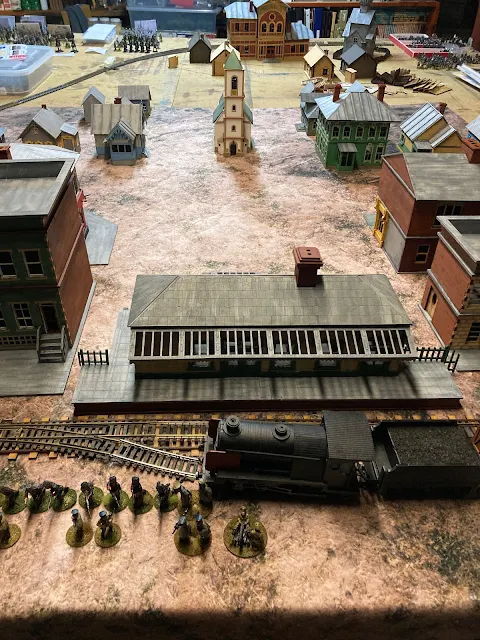The French and their forces landed at Odessa on the Black Sea, 18 December, 1918. They scattered their small force to the north, northeast and east including the town of Kherson. This town is located on the Dnieper River, a few miles inland from the Black Sea, some 150 miles (+/-) east of Odessa. The French commander assigned the responsibility of defending Kherson to the 1st Btn, 34th Ing Regiment of the Greek Army. This was supported (?) by one company of the French 176th Regi supported by two 65mm mountain guns. It was reinforced by a second company from the French 176th and two companies of the Greek 7th Inf Regi. Even though the Greeks made up the vast majority of the men, command was in the hands of the French Major Lanchon. There was a two tiered defense line consisting of an advance line based on the Kherson Railroad Station and a local church/cemetary, a few miles north of the town center (the main line) and its small fortress. On 1 Mar, Ataman Grigoriev's pro-Bolshevik forces arrived some 31 miles to the north and had delivered an ultimatum to Lt Mathios in command of the advanced position. The Allies were to lay down their weapons and evacuate by 1500hrs on 2 Mar, or face the consequences. This was rejected and the battle was on.
This view is northward looking over Kherson itself, toward the Kherson RR Station, seen top center. Kherson's riverside dock area is just off to the bottom of the photo...
The view is still northward, now a closeup on the station (l) and church (r). The defenders are seen at bottom. Two French Hotchkiss MMG, two French cos, three Greek cos and a Greek Evzoni co, and one White Russian co (not in photo, and supported by a French Armored Train and artillery)...Viewing southward to Kherson with the initial Bolshevik force drawn up for the assault just out of the photo to bottom. (The allies were heavily outnumbered 10-12,000 to 1000+). Late snow is lingering underneath the few trees...

















































